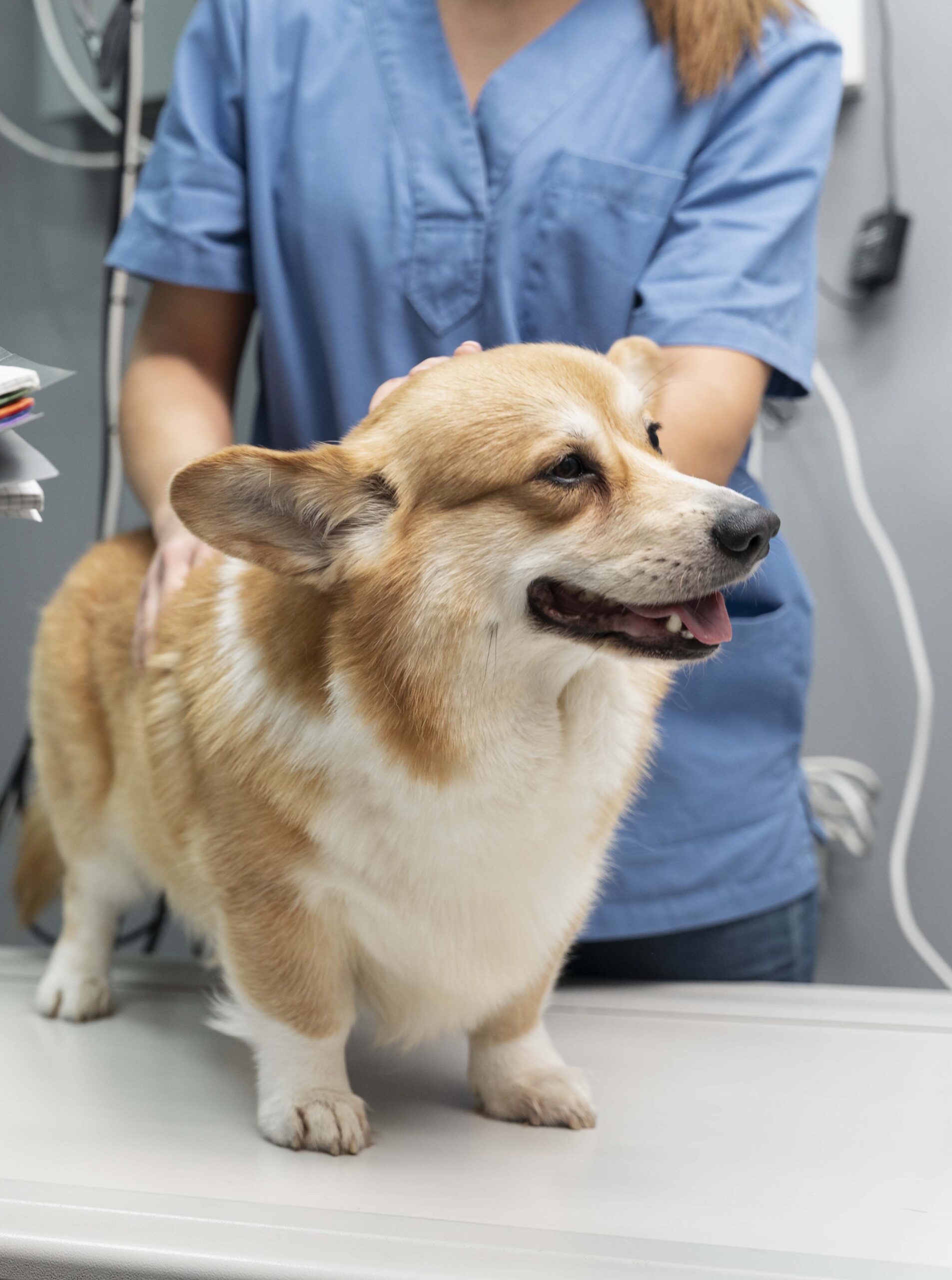Laparoscopic Surgery
Laparoscopic surgery involves a camera and special instruments inserted through a very small (one-inch) incision into the abdomen.

Laparoscopic Surgery
Laparoscopic surgery involve a camera and special instruments inserted through a very small (one inch) incision into the abdomen. Some surgeries can be performed this way including spays, gastropexies, intestinal biopsies and liver biopsies. The benefit is less tissue trauma/manipulation during surgery, reduced pain and a faster recovery time. Owners love small incisions versus traditional ones because dogs can be a little less restricted after surgery without the worry of stitches ripping open. Plus it makes for a much easier surgery on the dog!
Laparoscopic intestinal and liver biopsies are great options for dogs with chronic vomiting and diarrhea or high liver values. Traditionally, biopsies could only be done with a full-length abdominal incision. With the laparoscope, we are able to biopsy these organs and give owners a diagnosis without an invasive surgery.
A gastropexy involves surgically attaching the stomach to the body wall (inside surface of the abdomen) to prevent the deadly condition known as GDV or bloat. Breeds prone to bloat include Great Danes, Standard Poodles, Dobermans, Labs, St. Bernards and other large breed dogs. When done as a preventative surgery, a gastropexy is a life saver! And the laparoscope makes it happen easily and delivers a speedy recovery!
Male dogs with testicles that don’t descend are known as cryptorchid. Removal of the undescended testicle is critical because it will eventually become cancerous in most dogs. However, historically during these neuters, the only way to remove the testicle was through a full-length incision. Using a laparoscope, the camera allows us to see where the testicle is in the abdomen and we can remove it through a very tiny incision, making for both a happy dog and happy owner!
All surgical patients have preoperative blood work performed to provide us with an idea of vital organ function (like liver and kidneys) to insure a safe anesthetic experience for your pet. A surgical laser is used for incisions during most surgeries, resulting in less bleeding and better pain control. The laser cauterizes blood vessels and nerve endings as it cuts. Pain medications are administered before, during and after surgery to provide optimal comfort. Our surgical recovery area is warm, peaceful and monitored by Certified Veterinary Technicians throughout the day.
